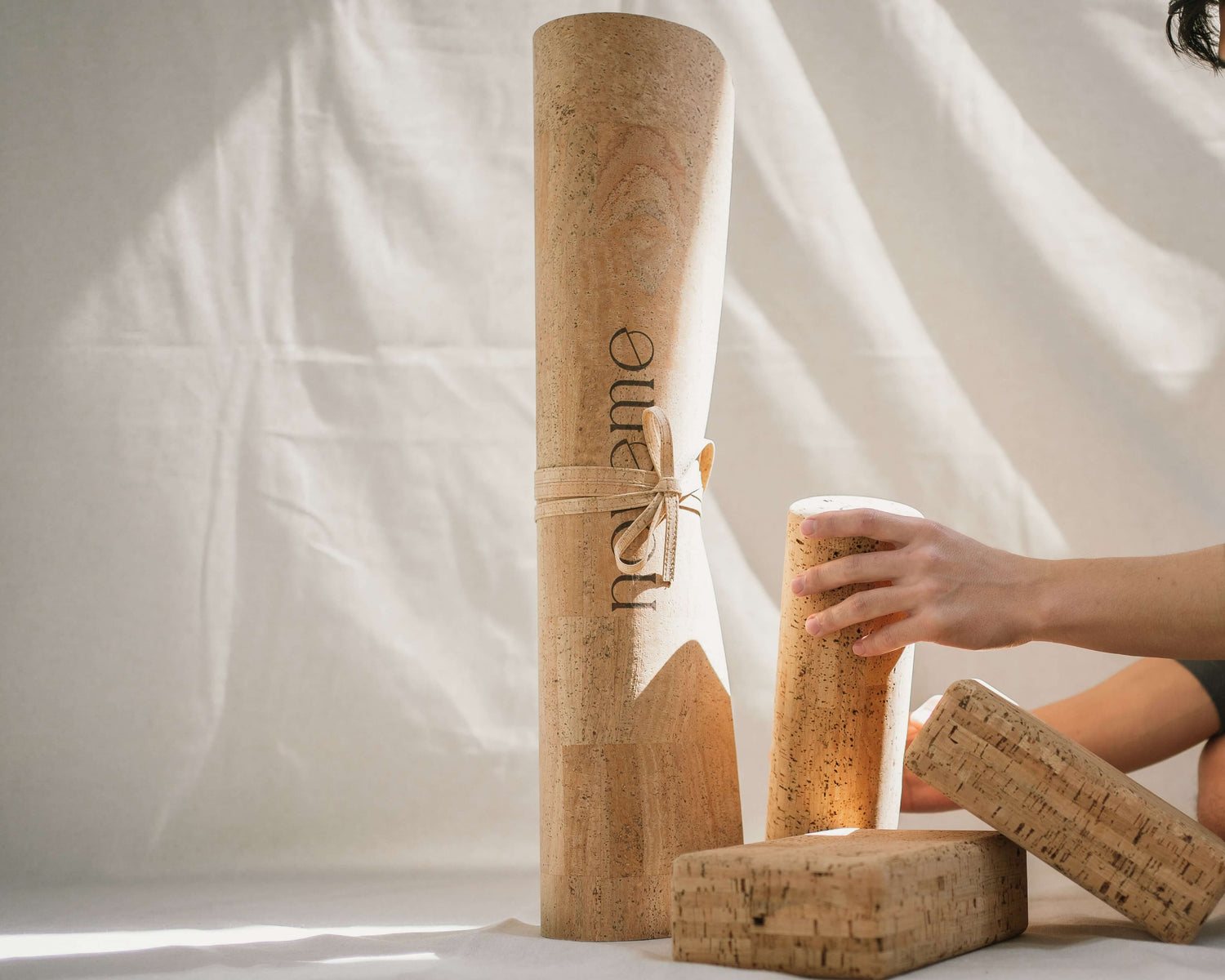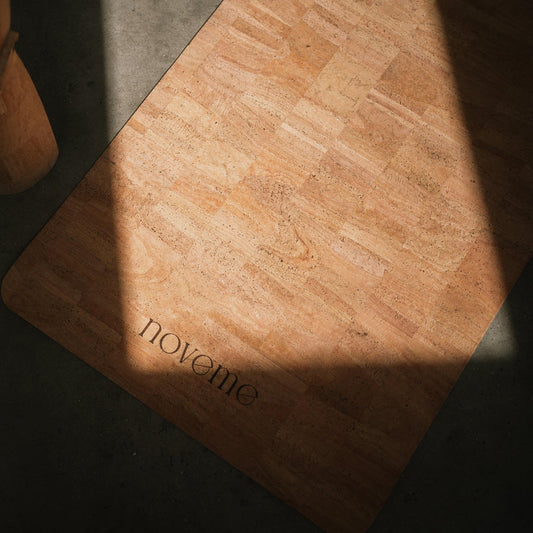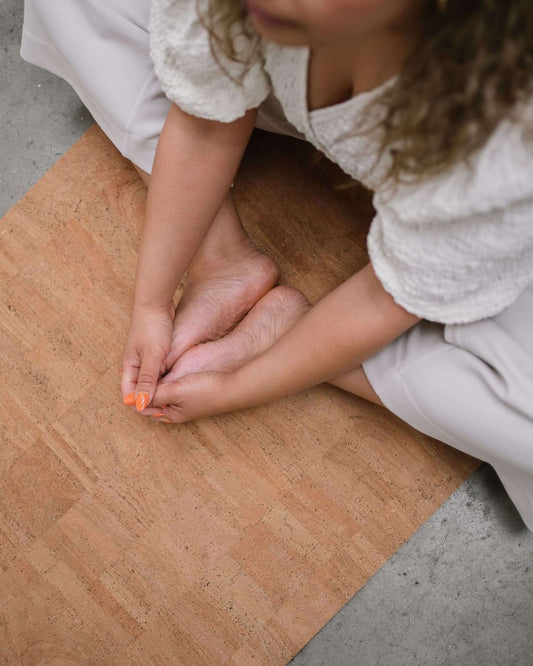Yoga has been practised for centuries and has gained immense popularity in recent years thanks to its numerous health and well-being benefits.
While it is often perceived as a practice predominantly for women, yoga is equally beneficial for men. In fact, yoga can provide a range of benefits that are particularly relevant to the male body and mind.
In this article, we will explore the benefits of yoga for men, how to get started, and some of the best beginner yoga poses for men.

WHAT IS YOGA?
The word ‘yoga’ comes from the Sanskrit word ‘yuj’, which means ‘to unite’, ‘to add’, or ‘to join’.
Yoga is the union of the mind, body, and spirit.
It is an ancient practice that has been passed down through the generations as a way to promote physical, mental, and spiritual well-being. The practice of yoga involves a combination of physical postures, breathing techniques, and meditation that work together to promote overall health and wellness.
CAN MEN DO YOGA?
One of the biggest myths a lot of men have stuck in their heads is that yoga is just for women.
While it is true that the majority of yoga practitioners are women, yoga is a practice that can benefit people of all genders. Yoga provides numerous physical and mental benefits relevant to both men and women, such as improved flexibility, strength, balance, stress reduction, and overall wellbeing.
In fact, there are many male yoga practitioners, including professional athletes, celebrities, and yoga teachers. It is important to remember that yoga is a practice that is accessible to all, regardless of gender, age, or fitness level.

WHAT ARE THE BENEFITS OF YOGA FOR MEN?
There are many reasons why you should consider practising yoga. Here are some of the most significant benefits of yoga for men:
IMPROVED PHYSICAL HEALTH
The practice of yoga involves holding postures and performing movements connected to breath, which strengthens the body and improves posture, endurance, and flexibility. Yoga can also boost immunity and promote healthy bowel movements.
If you already engage in physical activities, such as, sports or weightlifting, yoga can be a beneficial complement to your workout, as it helps to develop strength, flexibility, and balance.
If you’re just starting out with regular physical activity, you can benefit from complementing your yoga practice with some strength training.
STRESS RELIEF
Yoga can help to reduce stress levels and promote relaxation. During your practice, your mind is channelled away from anxious thoughts and into your body, as you focus on your movement and breathing.
IMPROVED MENTAL HEALTH
Yoga has been shown to have a positive impact on mental health. Regular practice can help to reduce symptoms of anxiety and depression, and promote feelings of well-being and contentment.
IMPROVED SLEEP
Yoga can be particularly useful if you struggle with insomnia, as it can help to improve the quality and duration of your sleep. If the underlying cause of your insomnia is burnout, stress, or anxiety, a regular yoga practice that includes breathwork and meditation can help you quiet the mind and relax the body, leading to deep, restorative sleep.
REDUCED RISK OF INJURY
Yoga can help you develop greater awareness of your body and reduce the risk of injury during physical activities. This is particularly relevant if you engage in high-impact activities such as running or weightlifting.
IMPROVED SEXUAL FUNCTION
Yoga can be beneficial for men experiencing erectile dysfunction (ED) as it can help to improve blood circulation to the pelvic region and strengthen the pelvic floor muscles. Certain yoga poses, such as the Plow pose, Downward-Facing Dog, and Bridge pose, can be particularly helpful in improving circulation, while the Cobra pose and Bow pose can help to strengthen pelvic floor muscles. Additionally, yoga can be helpful in reducing stress and anxiety, which are common causes of ED, through meditation, pranayama, and restorative yoga poses.

GETTING STARTED WITH YOGA
One of the main advantages of yoga is that you can literally do it anywhere. To get started, you just need a yoga mat (opt for a high-quality yoga mat if you can, as it will last you for years) and a flat surface.
HERE ARE SOME TIPS ON HOW TO GET STARTED:
Set time for your practice: Consistency is vital to experiencing the full benefits of yoga. Dedicate a set time every day for your practice, whether it's just 15 minutes or an hour, to establish discipline and prioritise your health and well-being. Regular practice strengthens the mind-body connection and can have positive effects on various aspects of life. If you can't practise every day, aim for three to four times a week to maintain a consistent routine.
Wear form-fitted, comfortable clothing that allows you to move freely: Baggy clothes are not ideal as they can get in the way and hinder your ability to perform poses. As for socks, take them off! Yoga is a barefoot practice.
Get some yoga props to assist your practice: While a yoga mat is all you need for a yoga practice, incorporating props such as blocks, straps, and bolsters can be helpful to ease into various poses and provide support. These props can assist with proper alignment, deepen stretches, and help prevent injury. So, consider adding them to your practice to enhance your experience.
Start with a Gentle Practice and get your way up: Start with a class that is labelled as either “gentle” or “for beginners.” If you are unsure of how to get started, look for a yoga studio in your area that offers classes for beginners. This can be a great way to learn the basics and get guidance from an experienced teacher.
If you don't feel ready to attend a class, you can start practising yoga at home. There are many online resources available that provide instruction on basic yoga poses and sequences.

5 BEGINNER-FRIENDLY YOGA POSES FOR MEN
These poses are beginner-friendly and can help you build a strong foundation for your yoga practice.
MOUNTAIN POSE
Mountain Pose is an excellent pose to help you improve your posture. It helps to strengthen the legs and core and promotes focus and concentration. It can also be beneficial if you experience lower back pain or sciatica.
HOW TO PERFORM MOUNTAIN POSE
- Stand with your feet hip-width apart.
- Distribute your weight evenly on both feet and engage your thigh muscles.
- Keep your arms by your sides with your palms facing forward.
- Lengthen your spine and lift the crown of your head towards the ceiling.
- Take deep breaths and focus on your posture.
DOWNWARD-FACING DOG
Downward-Facing Dog is an essential pose to help you increase flexibility in your hamstrings, calves, and spine. It also builds strength in your arms, shoulders, and upper back, which can be beneficial to improve your posture and reduce tension in your neck and shoulders.
HOW TO PERFORM DOWNWARD-FACING DOG
- Start on your hands and knees with your hands shoulder-width apart and your knees hip-width apart.
- Lift your hips towards the ceiling and straighten your arms and legs.
- Press your palms and heels into the ground and draw your shoulder blades towards each other.
- Hold the pose for several breaths.
WARRIOR II
Warrior II is a great pose to improve your balance, stability, and flexibility in your hips and shoulders. It strengthens the legs, hips, and core, which can be beneficial to prevent injuries and improve your athletic performance.
HOW TO PERFORM WARRIOR II
- Stand with your feet about three to four feet apart.
- Turn your left foot out 90 degrees and your right foot in slightly.
- Raise your arms to shoulder height and extend them out to the sides.
- Bend your left knee so that it is directly above your left ankle, and look over your left hand.
- Hold the pose for several breaths and then repeat on the other side.
BRIDGE POSE
Bridge Pose is a gentle backbend that can help to release tension and strengthen the back, glutes, and hamstrings. It can also be beneficial if you spend a lot of time sitting, as it can help to counteract the effects of sitting by opening the chest and shoulders.
HOW TO PERFORM BRIDGE POSE
- Lie on your back with your knees bent and your feet hip-width apart.
- Press your feet into the ground and lift your hips towards the ceiling.
- Interlace your fingers behind your back and roll your shoulders underneath you.
- Hold the pose for several breaths and then release.
TREE POSE
Tree Pose is a balancing pose that can help you improve focus, concentration, and stability. It strengthens the legs and core and can be beneficial to improve your athletic performance or prevent injuries.
HOW TO PERFORM TREE POSE
- Stand with your feet hip-width apart and shift your weight onto your left foot.
- Lift your right foot and place the sole of your right foot on your left inner thigh.
- Keep your hands in a prayer position in front of your chest or raise them above your head.
- Hold the pose for several breaths and then repeat on the other side.
Remember to listen to your body and move slowly and mindfully into each pose, only going as deep as is comfortable for you. With regular practice, these poses can help you build strength, flexibility, and balance, while also reducing stress and promoting overall well-being.











